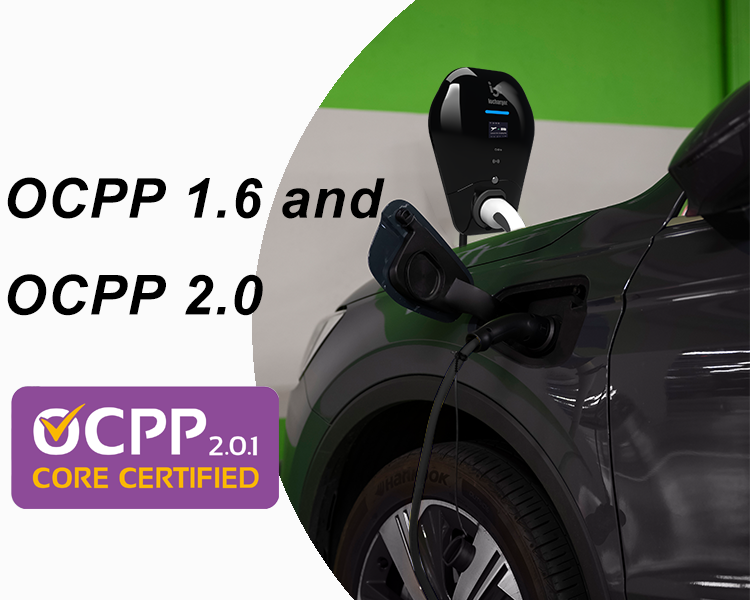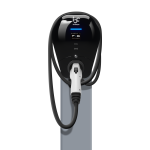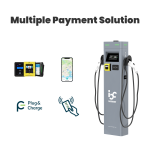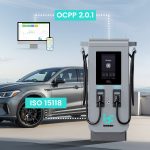
По мере роста популярности электромобилей (EV) растет спрос на удобные решения для зарядки. Если вы устанавливаете зарядную станцию у себя дома или расширяете свой бизнес с помощью зарядных устройств EV, выбор зарядного устройства OCPP (Open Charge Point Protocol) обеспечивает гибкость и перспективность. Протокол OCPP обеспечивает совместимость вашего зарядного устройства с различными системами управления и возможность его масштабирования в соответствии с вашими потребностями. В этом руководстве подробно описаны шаги по настройке зарядного устройства OCPP для использования дома или на предприятии.
1. Выберите подходящее зарядное устройство OCPP EV
Прежде всего, необходимо выбрать зарядное устройство для EV, соответствующее требованиям OCPP и отвечающее вашим потребностям. Учитывайте такие факторы, как скорость зарядки (уровень 2 или выше для более быстрой зарядки), мощность, а также дополнительные функции, такие как интеллектуальная зарядка или удаленное управление.
Для домашнего использования Зарядное устройство уровня 2 как правило, достаточно. Однако предприятиям могут потребоваться более мощные варианты для поддержки нескольких автомобилей или зарядки автопарка.



Если вы ищете надежный вариант, iocharger предлагает ряд зарядных устройств, соответствующих стандарту OCPP и предназначенных как для бытового, так и для коммерческого использования, обеспечивая гибкость и простоту интеграции. На самом деле, iocharger - один из первых производителей, прошедших сертификацию OCPP 2.0.1Благодаря этому все зарядные устройства могут быть модернизированы до этого новейшего стандарта, что снижает затраты пользователей и упрощает модернизацию системы.
2. Оцените свои электрические возможности
Перед установкой важно оценить существующую систему электроснабжения, чтобы убедиться, что она сможет поддерживать новое зарядное устройство. Для большинства домашних зарядных устройств уровня 2 требуется 240-вольтовая розетка, аналогичная той, что используется для крупной бытовой техники. Предприятиям может потребоваться модернизация электрической инфраструктуры для поддержки нескольких зарядных устройств или зарядных устройств коммерческого класса.
Проконсультируйтесь с электриком или специалистом по зарядным устройствам EV, чтобы убедиться, что ваша система может выдержать дополнительную нагрузку и соответствует местным нормам.
3. Установите зарядное устройство
После того как вы выбрали зарядное устройство и оценили мощность электросети, пора приступать к установке. Для жилых домов это обычно означает установку зарядного устройства на стене рядом с местом парковки. Для предприятий установка может включать в себя несколько зарядных станций на парковках или в гаражах.
Чтобы обеспечить безопасность и соответствие электрическим нормам, установкой должен заниматься лицензированный электрик. Многие зарядные устройства OCPP, в том числе от iocharger, разработаны для легкой установки, что упрощает процесс.
4. Подключение к внутренней системе
Одно из главных преимуществ зарядных устройств OCPP - возможность подключения к различным внутренним системам для мониторинга и управления. Такое подключение позволяет отслеживать расход энергии, устанавливать тарифы на зарядку и удаленно управлять несколькими зарядными станциями.
Для предприятий интеграция зарядных устройств с системой управления, совместимой с OCPP, может упростить работу, позволяя отслеживать, контролировать производительность и выставлять счета. Продукты iocharger легко интегрируются с платформами OCPP, позволяя управлять сетью зарядных устройств через центральную панель управления. iocharger также предлагает специализированные системы управления, предназначенные для домашних и коммерческих зарядных устройств.
Узнать больше об их системах управления можно здесь: Система управления энергопотреблением iocharger.
5. Настройка параметров зарядки
После установки и настройки внутреннего интерфейса следующим шагом будет настройка параметров зарядного устройства. Для бытовых пользователей это может включать в себя настройку графика зарядки, чтобы воспользоваться преимуществами непиковых тарифов на электроэнергию. Для предприятий, возможно, потребуется настроить аутентификацию пользователей или варианты оплаты, чтобы клиентам или сотрудникам было проще заряжать свои автомобили.
Протокол OCPP дает вам полный контроль над работой зарядного устройства. Зарядные устройства iocharger, совместимые с OCPP, оснащены настраиваемыми функциями, позволяющими адаптировать систему к вашим конкретным потребностям.
6. Тестирование и мониторинг
После того как зарядное устройство установлено и настроено, необходимо протестировать систему, чтобы убедиться, что все работает правильно. Подключите свой EV и проверьте состояние зарядки через приложение или платформу, подключенную к зарядному устройству OCPP. Для предприятий мониторинг нескольких станций является ключевым фактором обеспечения бесперебойной работы.
Постоянный мониторинг помогает выявить потенциальные проблемы на ранней стадии и дает представление о характере использования, позволяя оптимизировать производительность. С помощью iocharger мониторинг и управление зарядным устройством, соответствующим требованиям OCPP, становятся простыми, обеспечивая бесперебойную и эффективную работу.
Заключение
Установка зарядного устройства OCPP для вашего дома или предприятия - это разумная инвестиция, обеспечивающая гибкость, масштабируемость и контроль. Выполнив следующие шаги и выбрав надежный продукт, соответствующий требованиям OCPP, такой как iocharger, вы сможете создать перспективную и простую в управлении систему зарядки EV. Независимо от того, устанавливаете ли вы одно зарядное устройство дома или создаете сеть для своего бизнеса, OCPP гарантирует, что ваша система останется совместимой с развивающимися технологиями и масштабируемой для будущего роста.
